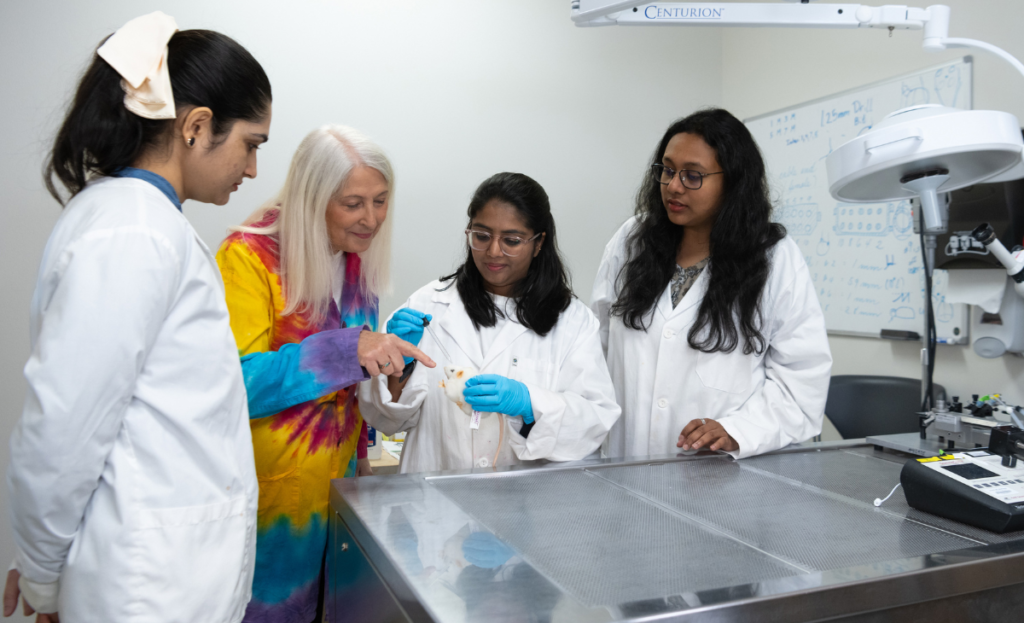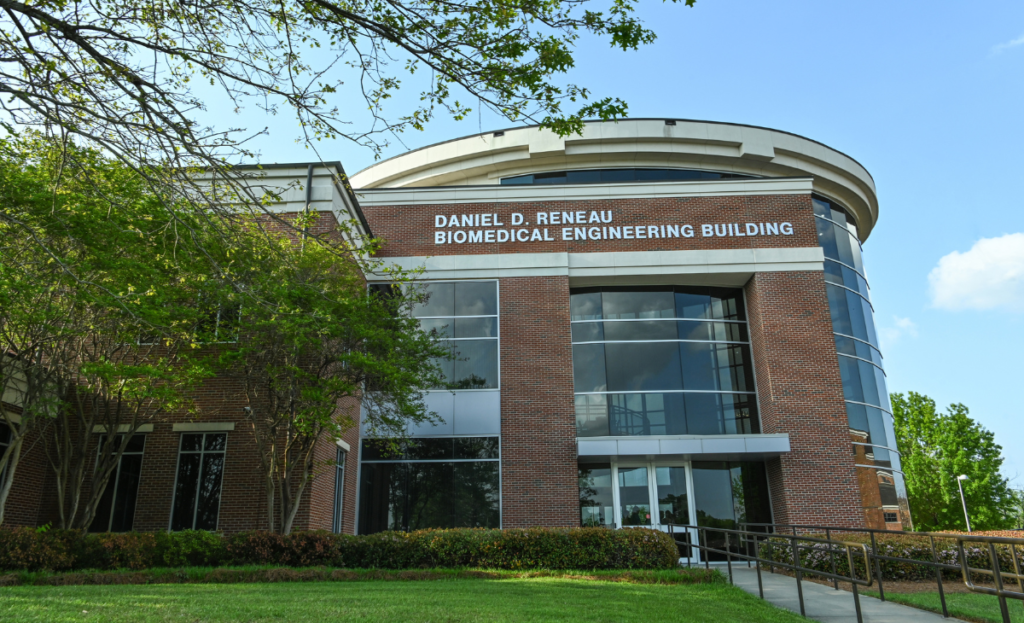Every day, nearly 600 people experience traumatic brain injuries (TBI), whether it’s a football player that takes a hit, a soldier caught in a blast, or a driver injured in a collision. Enter Dr. Teresa Murray: she and her students are combating TBI one barrier at a time.
Murray, academic director of Biomedical and Chemical Engineering at Louisiana Tech, leads research focused on how the brain responds to trauma and how to treat it before long-term damage sets in. Her work centers on a major obstacle in neuroscience: the blood-brain barrier. This natural defense system protects the brain from harmful substances in the bloodstream, but it also blocks many medications from reaching injured brain tissue.
“Treating TBI is not easy because the brain is surrounded by a layer of cells that protect it from our blood circulation,” Murray said. “Not all medicines will cross the blood-brain barrier.”
According to Murray, head injuries with a range of severity are shockingly common.
“There are 2.5 million people who either have a concussion or brain injury, from mild to severe, every year,” she said. “Over 200,000 people are hospitalized, with almost 70,000 of them dying each year, and that’s just in the U.S.”
Murray’s research is supported though the Center for Biomedical Engineering and Rehabilitation Science (CBERS), a cross-discipline group of Louisiana Tech faculty members focused on advancing health and well-being.
In the Integrated Neuroscience and Imaging Laboratory (INI), Murray and her team have identified a small molecule designed to overcome the blood-brain barrier obstacle.
“It’s a small molecule that has two parts,” Murray added. “One part helps it cross that blood-brain barrier, and the other part is an anti-inflammatory, and we’ve had great success with this when we infuse it intranasally.”
Delivered through a nasal spray, the compound has shown promise in preclinical studies, allowing fast and target treatment after injury.
“The beauty of a nasal spray allows us to treat sports injuries, battlefield injuries, and more ahead of time and not wait for symptoms to develop,” Murray said. “We can start working right away on reducing inflammation and improving outcomes for people with TBI.”
Early intervention matters because brain inflammation caused by TBI can persist and lead to more severe long-term outcomes.
“The immediate damage from TBI can cause inflammation that can last for weeks or months,” Murray said. “It can eventually cause long-lasting memory and emotional problems.”
Much of this research is driven by doctoral students seeking to become the next generation of researchers who tackle real-world problems.

“They’re assisted by a small army of undergraduate students who do everything from paperwork to working with our subjects,” Murray said. “The undergrads are gaining experience and developing soft skills to get that next job upon graduation.”
One student on the front lines of this work is Geetika Amarnath, a doctoral candidate in the Biomedical Engineering Ph.D. program. Her research focuses on two FDA-approved drugs, minocycline and rolipram, whose combination may help lessen inflammation after a moderate TBI.
“We use live animal models for our studies,” Amarnath said. “Our goal is to determine if this drug could serve as a prophylactic treatment to prevent or reduce the severity of neurological disorders that can develop after injury.”
Her interest in the research began with a desire to help those facing long-term effects of brain injuries.
The opportunity to make a difference in someone’s quality of life and contribute to a field with such significant and lasting implications really motivated me to join Dr. Murray’s lab.”
– GEETIKA AMARNATH
The importance of this research goes beyond the lab for Amarnath. It’s for the lives of people who may never realize the full scope of their injury until it’s too late. She has seen how the subtle nature of TBI symptoms can leave someone struggling with conditions that could have been prevented.
“TBI-related injuries can lead to a range of neurological disorders that are often misdiagnosed because their symptoms mimic other conditions,” Amarnath said. “Sometimes symptoms appear weeks, months, or even years later, which complicates diagnosis and treatment. Our work could potentially prevent these long-term consequences.”
In addition to TBI, Murray’s lab explores treatment options for conditions such as epilepsy, stroke, and Alzheimer’s disease. INI develops and uses micro-optical systems and collaborates with others in CBERS to build tools that help researchers understand the brain and test potential therapeutic solutions.

Murray’s lab fosters a supportive environment that helps students grow as researchers and as individuals, and Amarnath credits her studies to this collaborative space.
Dr. Murray provides us with the autonomy and resources necessary to conduct our work without any hindrance. She constantly encourages us to develop and pursue our own ideas in the lab, and we have cultivated a strong sense of camaraderie to advance our collective research goals.”
– GEETIKA AMARNATH
Looking ahead, Murray and her team would like to expand their research into larger animal models. “We are working to secure funding and approval for a Swine Research Facility on the Louisiana Tech Farm,” Murray said.
As research continues and future grants are pursued, the hope is that this nasal spray could eventually lead to a new standard in TBI care, one that treats the brain quickly and effectively, wherever the injury happens.
